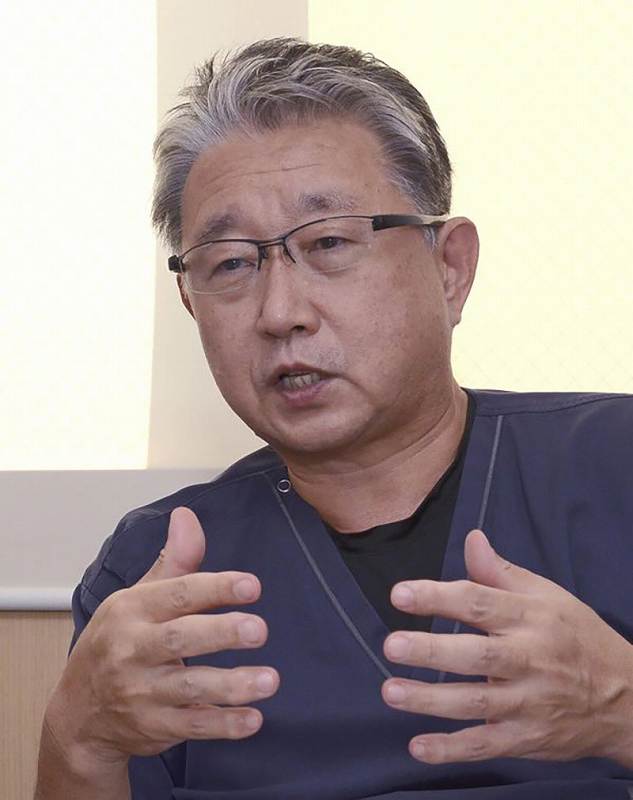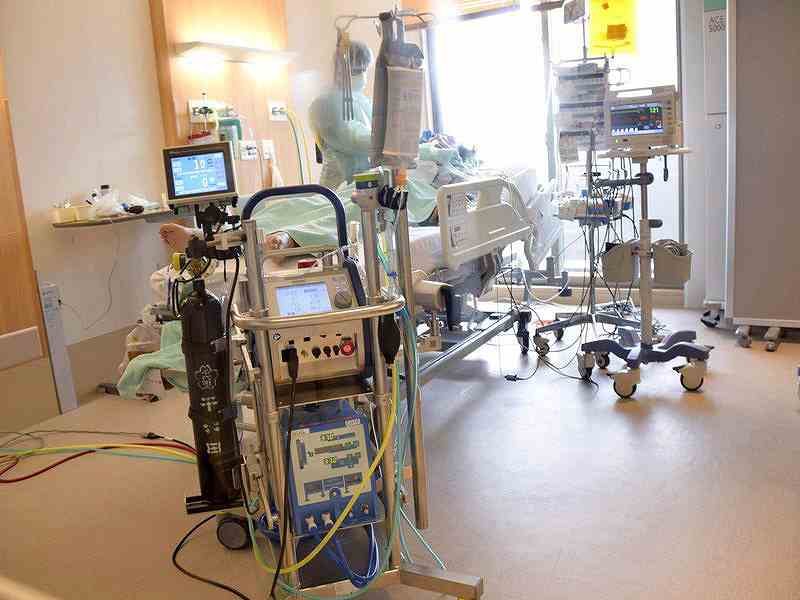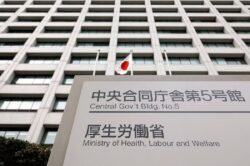
Japan ECMO Network Chairman Shinhiro Takeda
November 18, 2021
Shinhiro Takeda, 61, chairman of Japan ECMO Network, explained the importance of training doctors who know how to use ECMO (extracorporeal membrane oxygenation) machine to treat COVID-19 patients with severe symptoms. Yomiuri Shimbun staff writer Cynthia Yumiko Staub interviewed him recently. The following is an excerpt of the interview.
At the Kawaguchi Cardiovascular and Respiratory Hospital [in Kawaguchi, Saitama Prefecture] where I am the director, we have treated critically ill coronavirus patients. Our intensive care unit of eight beds was constantly full, so around the [summer] Obon holidays we carried out a speedy expansion to 16 beds.
In cases of respiratory failure, the “last line of defense” in treating the patient is ECMO. Our hospital has five units that were operated at full capacity, used by a total of about 20 patients.
[Patients with respiratory failure first have their trachea intubated, and a ventilator is used to provide oxygen. For those with significantly reduced lung function whose condition does not improve with the ventilator, ECMO is used.]
The ECMO is a device in which a tube is inserted at the base of the thigh or into the neck and the blood is circulated externally, where it is directly oxygenated and then returned to the body.
I also serve as chairman of the Japan ECMO Network (ECMOnet) comprising doctors who are trained to use ECMO. A survey we conducted found that ECMO was used on 330 critically ill patients during the fifth wave, an increase from the number during the third wave (131) and fourth wave (220). The survival rate was 71.5 percent, about the same as in the fourth wave.
In Tokyo, the sharp surge in infections led to an increase in the number of severely ill patients, and there were continually cases of hospitals that accepted moderately ill patients not being able to find places to transfer those whose condition had worsened.

ECMO equipment is seen at the Kawaguchi Cardiovascular and Respiratory Hospital in Saitama Prefecture.
Given that situation, starting in late August ECMOnet dispatched about 300 doctors capable of operating ECMO to Tokyo hospitals with moderately ill patients. They set up and managed the equipment, and provided support for treatment until a transfer destination could be found.
[There are believed to be about 2,200 ECMO devices in Japan, but only a portion are usable because of a shortage of staff capable of operating them to treat COVID-19 patients. During the fifth wave, only about 160 units at most were in use per day.]
To use ECMO in treating COVID-19 patients, specialized knowledge is required. Patients are administered drugs, nutrients, and fluids, but the survival rate varies surprisingly depending on how the amounts are adjusted. As such, it must be done with extreme caution while monitoring the patient’s condition.
When used for such conditions as heart disease or cardiopulmonary resuscitation, ECMO is only needed for a few days — in the case of coronavirus, it lasts about two weeks. This is because not only does cardiopulmonary function take time to recover, but in that time, it is easier for blood clots to form, increasing the risk of cerebral or gastrointestinal hemorrhaging.
Since May last year, ECMOnet has held seminars nationwide to teach how to use the device and build up a stock of operators.
To use ECMO efficiently, it is also important to consolidate the beds for critical patients. There is a limit to how well a single hospital can care for patients whose conditions range from moderate to severe.
If we create central treatment bases for critically ill patients in each region and bring together doctors and nurses who can use ECMO to treat them, more patients can make use of the devices and more will recover.
"Society" POPULAR ARTICLE
-

M4.9 Earthquake Hits Tokyo, Neighboring Prefectures
-

Israeli Tourists Refused Accommodation at Hotel in Japan’s Nagano Pref., Prompting Protest by Israeli Embassy and Probe by Prefecture
-

M7.5 Earthquake Hits Northern Japan; Tsunami Waves Observed in Hokkaido, Aomori and Iwate Prefectures
-

Tsukiji Market Urges Tourists to Avoid Visiting in Year-End
-

M5.7 Earthquake Hits Japan’s Kumamoto Pref., Measuring Upper 5 Intensity, No Tsunami Expected
JN ACCESS RANKING
-

Keidanren Chairman Yoshinobu Tsutsui Visits Kashiwazaki-Kariwa Nuclear Power Plant; Inspects New Emergency Safety System
-

Imports of Rare Earths from China Facing Delays, May Be Caused by Deterioration of Japan-China Relations
-

Tokyo Economic Security Forum to Hold Inaugural Meeting Amid Tense Global Environment
-

University of Tokyo Professor Discusses Japanese Economic Security in Interview Ahead of Forum
-

Japan Pulls out of Vietnam Nuclear Project, Complicating Hanoi’s Power Plans























